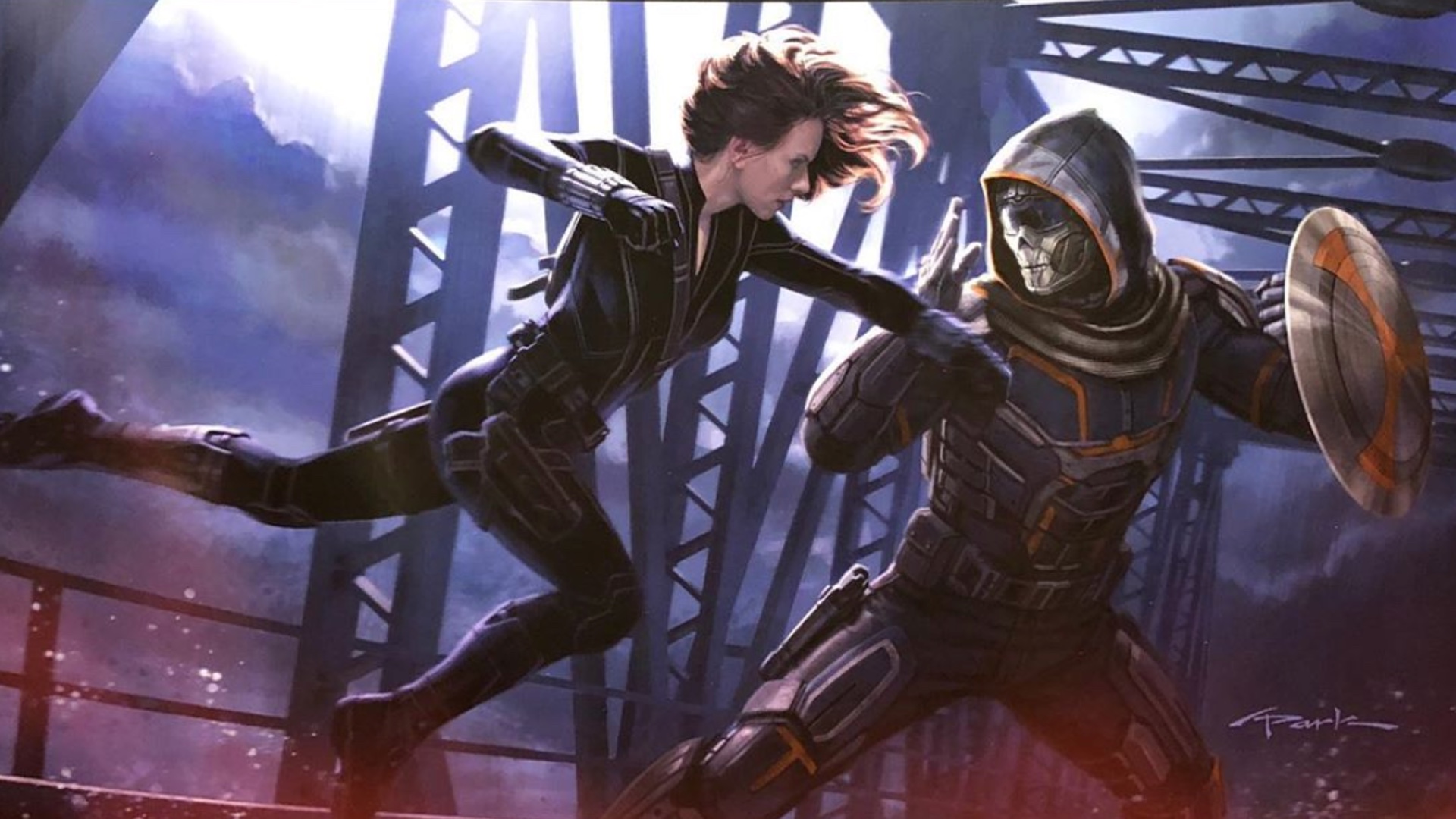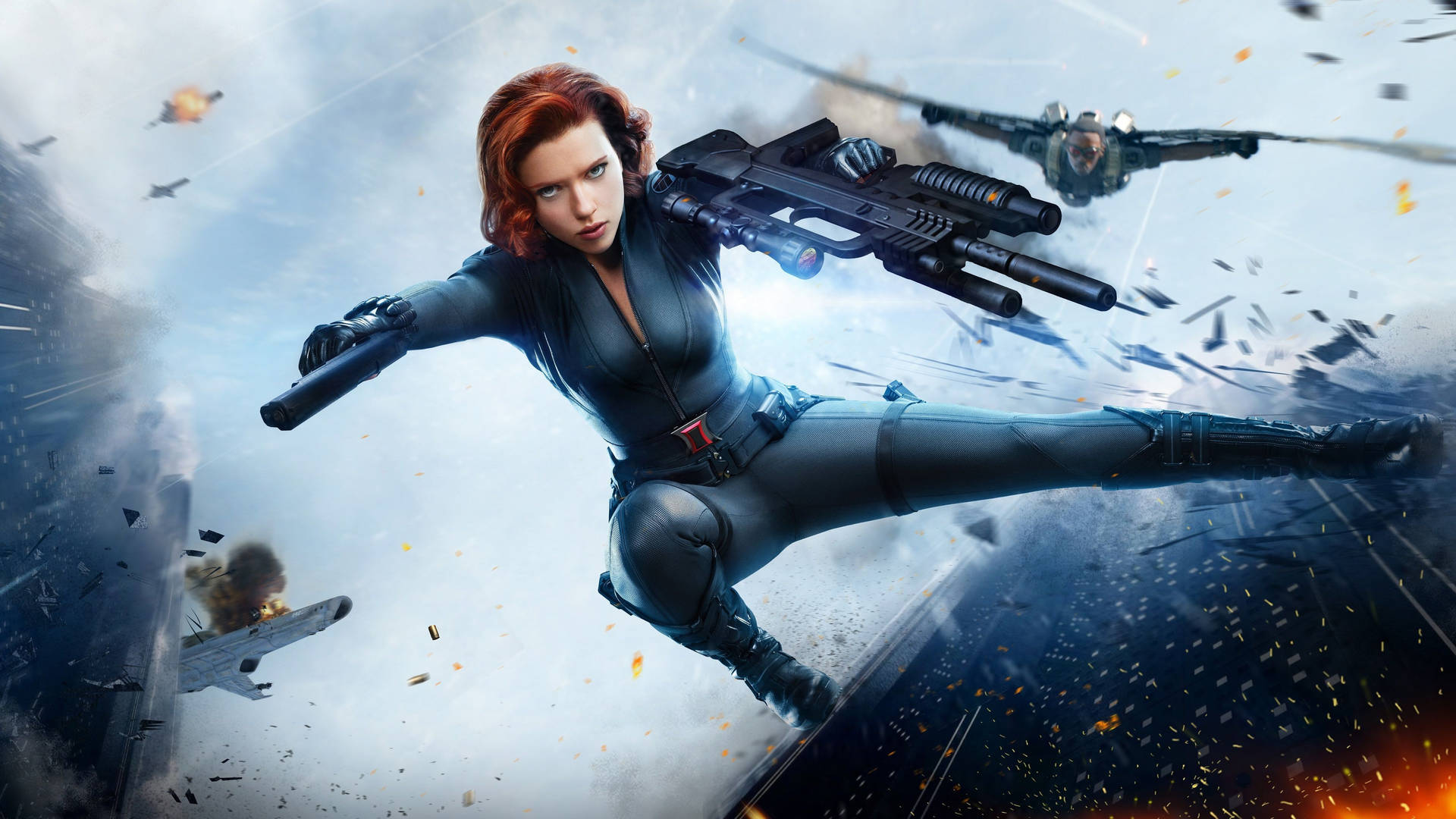The Fight Choreography and Action

The Black Widow chair fight scene is a masterclass in action choreography, showcasing Natasha Romanoff’s unparalleled combat skills in a confined and dynamic environment. The scene’s choreography is a blend of elegance and brutality, emphasizing both the beauty of Black Widow’s movements and the raw power of her strikes.
Effectiveness in Showcasing Black Widow’s Skills
The choreography effectively highlights Black Widow’s agility, speed, and versatility as a fighter. The scene uses a variety of fighting styles, including Krav Maga, Judo, and Aikido, showcasing her adaptability in close-quarters combat. The use of the chair as a weapon and a tool for movement further emphasizes her resourcefulness and creativity in combat.
Use of Weapons and Fighting Techniques
Black Widow utilizes a variety of weapons and techniques throughout the scene, showcasing her diverse arsenal. These include:
* Hand-to-hand combat: Black Widow’s mastery of unarmed combat is evident in her swift strikes, grapples, and takedowns.
* The chair: The scene cleverly uses the chair as a weapon, transforming a seemingly ordinary object into a tool for both offense and defense. Black Widow uses the chair to block attacks, strike her opponents, and create leverage for throws.
* Electric shock: Black Widow’s signature electric shock batons make a dramatic appearance, adding a layer of technological sophistication to her arsenal. The electric shock adds a dangerous element to her attacks, further emphasizing her ability to subdue opponents quickly.
Comparison to Other MCU Fight Scenes
The Black Widow chair fight scene stands out among other MCU fight scenes due to its unique setting and focus on close-quarters combat. It shares similarities with the fight scenes in “Captain America: The Winter Soldier” in terms of its fast-paced action and emphasis on hand-to-hand combat. However, the Black Widow chair fight scene is more confined, adding a sense of urgency and claustrophobia that enhances the tension and excitement.
Impact on Tension and Excitement
The choreography effectively builds tension and excitement throughout the scene. The fast-paced action, dynamic camera work, and the use of close-ups keep the audience engaged. The scene’s choreography is also designed to highlight the physicality of the fight, creating a sense of visceral impact that further immerses the audience in the action.
Character Development and Motivation: Black Widow Chair Fight Scene

The Black Widow chair fight scene is a pivotal moment in the film, showcasing Natasha Romanoff’s physical prowess and emotional depth. This scene serves as a powerful illustration of her character development and motivations, as well as her complex relationship with other characters.
The scene unfolds as Natasha engages in a brutal hand-to-hand combat with her former Red Room “sister,” Yelena Belova. Natasha’s motivations for fighting are multifaceted. Firstly, she is driven by a deep sense of responsibility to protect the world from Yelena, who has been manipulated by Dreykov to become a weapon. This responsibility stems from her own traumatic past as a Red Room assassin, and her desire to prevent others from suffering the same fate. Secondly, she is motivated by a yearning for redemption and a chance to escape the shadows of her past. The fight becomes a symbolic battle for her own freedom and the freedom of other women trapped in the Red Room’s clutches.
Emotional Impact of the Scene
The chair fight scene is emotionally charged, highlighting the personal stakes involved in Natasha’s struggle. Both Natasha and Yelena are deeply affected by the encounter. Natasha’s emotions are a mixture of anger, sadness, and determination. She is enraged by Yelena’s actions, but also deeply saddened by the fact that she has been manipulated into becoming a weapon. This sadness stems from her own experiences as a Red Room assassin, and her understanding of the pain and trauma inflicted upon Yelena. Yelena, on the other hand, is torn between her loyalty to Dreykov and her growing awareness of the Red Room’s manipulation. She is confused and conflicted, unsure of who to trust or what to believe.
Relationship Development
The scene also contributes to the development of Natasha’s relationship with other characters in the film. The fight highlights the deep bond between Natasha and Yelena, who were once sisters in the Red Room. The scene shows that even though they have been separated for years, they still have a strong connection. The fight also emphasizes the importance of trust and forgiveness. Natasha’s willingness to fight Yelena, even though she knows she is being manipulated, demonstrates her faith in Yelena’s capacity for redemption.
Symbolic Elements and Themes, Black widow chair fight scene
The chair fight scene is rich in symbolism and themes. The chair itself serves as a powerful symbol of Natasha’s past. It represents the Red Room’s control over her, and her inability to escape her past. The fight itself is a metaphor for Natasha’s struggle to break free from the Red Room’s clutches. It represents her battle for freedom, both physically and emotionally. The scene also explores themes of manipulation, control, and the consequences of violence. The fight between Natasha and Yelena highlights the destructive power of the Red Room, and the lasting impact of its manipulation.
Technical Aspects of the Scene

The Black Widow chair fight scene is a visually stunning and technically impressive display of action choreography. The scene utilizes a variety of camera angles and editing techniques to enhance the action and create a sense of tension and excitement. The scene’s sound design plays a crucial role in amplifying the impact of the fight, while the setting and special effects contribute to the scene’s overall atmosphere and believability.
Camera Angles and Editing Techniques
The scene utilizes a variety of camera angles to capture the action from different perspectives. For example, the scene opens with a wide shot of the two characters facing each other. This establishes the setting and allows the audience to see the entire fight space. As the fight progresses, the camera moves closer to the action, using close-ups to capture the intensity of the fight.
- Close-ups are used to show the characters’ expressions and reactions, highlighting the ferocity and desperation of the fight. These shots provide a visceral experience for the audience, drawing them into the heart of the action.
- Medium shots are used to capture the flow of the fight, showcasing the choreography and the characters’ movements. This allows the audience to follow the fight’s momentum and appreciate the skill and athleticism of the performers.
- Wide shots are used to establish the fight’s context, showing the surrounding environment and the characters’ positions within it. These shots provide a sense of scale and scope, emphasizing the danger and intensity of the fight.
The scene’s editing is also crucial to its visual impact. Quick cuts are used to create a sense of urgency and chaos, reflecting the intensity of the fight. Slow-motion shots are used to highlight specific moments of action, emphasizing the skill and precision of the characters’ movements. The editing also helps to create a sense of rhythm and flow, keeping the audience engaged and invested in the action.
Sound Design
The scene’s sound design is critical to creating a sense of tension and excitement. The fight is accompanied by a score that builds in intensity as the fight progresses, amplifying the action and adding emotional weight to the scene.
- Impact sounds are used to emphasize the force of the characters’ blows, creating a visceral and realistic experience for the audience.
- Footsteps and other environmental sounds are used to create a sense of atmosphere and realism, immersing the audience in the scene.
The sound design also plays a role in creating a sense of suspense, using pauses and silences to build tension before the next burst of action.
Setting
The fight takes place in a claustrophobic, dimly lit setting, creating a sense of tension and danger. The setting also reflects the characters’ emotional state, highlighting the desperation and intensity of the fight. The confined space adds to the fight’s physicality, emphasizing the characters’ movements and the impact of their blows.
Special Effects
The scene utilizes a variety of special effects to create a believable and exciting fight. These effects include:
- Digital compositing is used to create realistic fight choreography, combining live-action footage with computer-generated imagery to create seamless and dynamic fight sequences.
- Practical effects are used to enhance the fight’s realism, creating a sense of impact and physicality. These effects include explosions, fire, and smoke.
The scene’s special effects are used sparingly, but effectively, enhancing the action without distracting from the fight choreography.
Black widow chair fight scene – The Black Widow’s chair fight scene is a brutal ballet of contortion and strength, a testament to her agility. But what if, instead of a rigid chair, she was suspended in a black outdoor hanging chair ? The swaying, unpredictable movement would add another layer of complexity, forcing her to adapt and find new ways to utilize her skills.
The fight would become a dance of balance, a precarious game of cat and mouse in the air.
The Black Widow’s chair fight scene, a whirlwind of acrobatic fury, felt almost theatrical, like a performance staged against a backdrop of sleek, black leather. But in the real world, a more subtle elegance can be found in a black fabric accent chair , its simple lines and soft curves whispering of a different kind of power – the power of understated sophistication.
Perhaps, in a world of high-flying action, a quiet moment of contemplation in such a chair could be just as impactful, offering a different kind of strength, a strength born of stillness.
